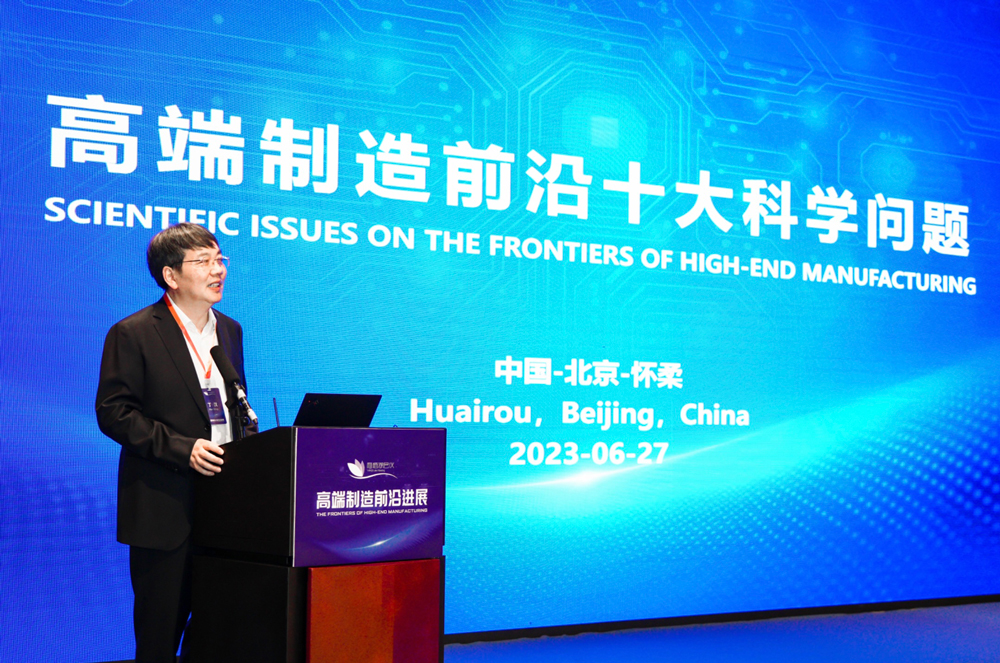6月27日上午,由中国科学院和北京市联合举办的第五届雁栖湖会议发布了“2023年高端制造前沿十大科学问题”。这些问题分别是:
1.如何实现原子级可控制造? (How to achieve controllable manufacturing at the atomic scale?)
2.机器人化制造如何影响未来制造范式? (How does robotized manufacturing impact the future manufacturing paradigm?)
3.高能束增材制造如何实现精准控形控性? (How to precisely control geometry and performance in high-energy-beam additive manufacturing?)
4.如何基于任意元素与结构创制新物质? (How to generate new matter and materials based on arbitrary elements and structures?)
5.如何实现机器人类人技能作业? (How to realize human-like skills in robotic operations?)
6.极端光场制造中载能粒子的时空演化机制及效应是什么? (What are the mechanisms and effects of energy-carrier spatio-temporal evolution during extreme-light-field manufacturing?)
7.如何实现异质异构跨尺度制造? (How to achieve heterogeneous cross-scale manufacturing?)
8.如何实现性能驱动的高附加值制造? (How to achieve performance-driven high-value added manufacturing?)
9.如何实现高效高性能多尺度激光制造? (How to realize simultaneously high efficiency and high performance in multi-scale laser manufacturing?)
10.如何实现面向未来制造的机器人系统? (How to realize future manufacturing robot systems?)
本次十大科学问题围绕激光制造、微纳制造、机器人化智能制造三个方向,从100余个覆盖不同领域的候选问题中研讨凝练形成,并面向全球公开发布,以激励更多的科学家对新的科学问题发起挑战,进一步推进高端制造相关科学领域的发展和进步。
第五届雁栖湖会议聚焦高端制造前沿,分析科学前沿问题,推动科学发展和学科建设,促进学科交叉与国际学术交流,为关键领域科学技术提供跨学科和跨行业创新能力的科技支撑和战略咨询,充分发挥了中国科学院学部的学术引领作用。

